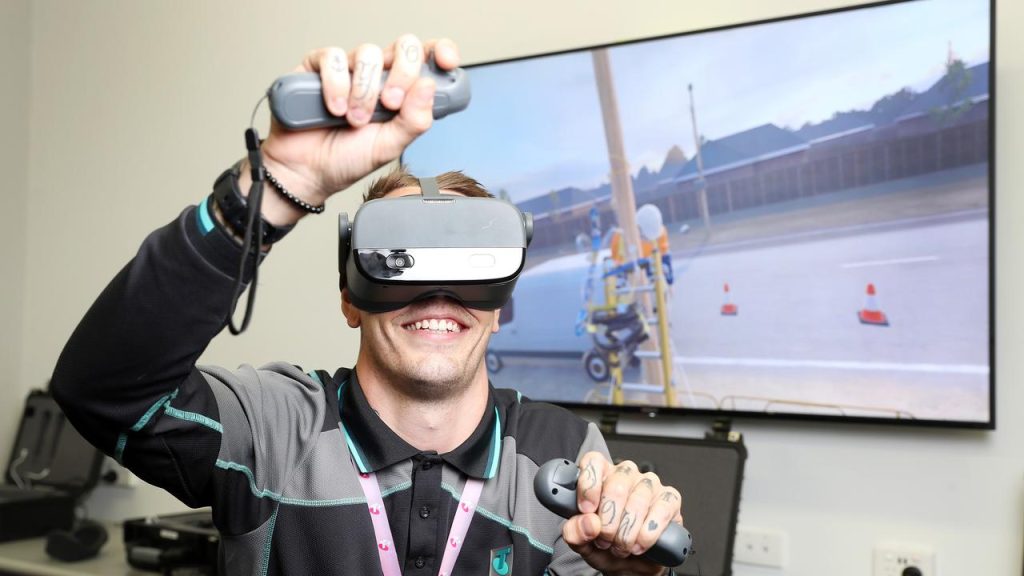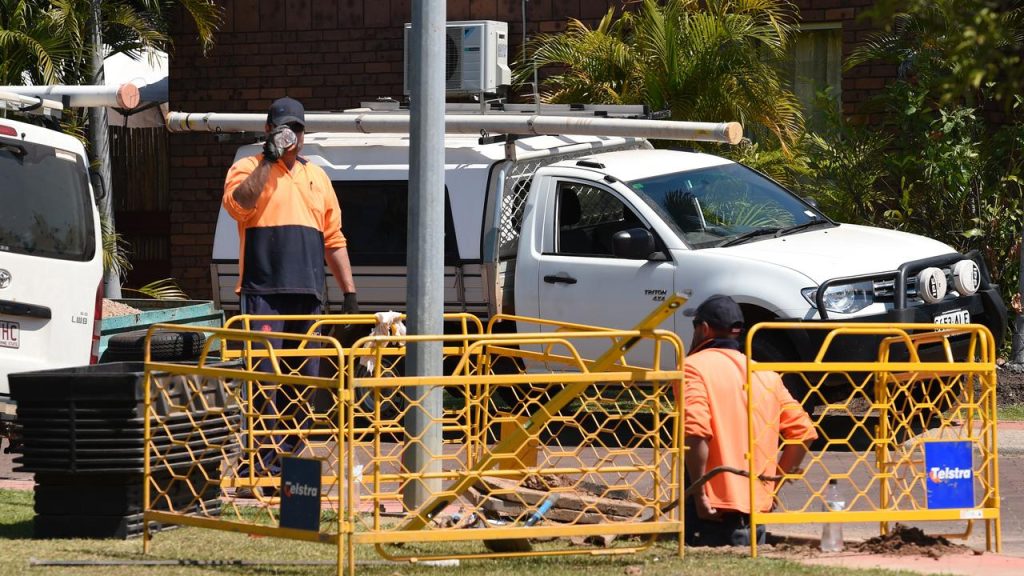Telstra will axe up to 2800 jobs – or about 9 per cent of its workforce – as it races to achieve its ambitious cost savings as part of its much-hyped T25 strategy and partners with Indian technology giant Infosys to automate more engineering tasks.
Australia’s biggest telco has rejected that the cuts are part of its push into artificial intelligence, despite one senior telecommunications industry rival branding it a “sinister move”.
Chief executive Vicki Brady says the cuts were necessary to ensure “Telstra could continue to make the investments needed to support the ever-increasing growth in data volumes on its networks and deliver improved connectivity for customers across the country”.
“I appreciate the uncertainty proposed changes like this can create for our people, and we will support them through this change with care and transparency,” Ms Brady said.
“Telstra’s ongoing investment in infrastructure, technology, innovation and service for our customers drives growth and underpins Australia’s digital economy, contributing to the prosperity of the nation.
“This is occurring within a dynamic environment, with an evolving competitive landscape, rapid advances in technology, changing customer needs, and the ongoing inflationary pressures facing all businesses.”

Telstra has gone virtual in hands-on training for its field workers. Picture: Sarah Reed
Ms Brady attempted to cauterise the fallout by announcing that Telstra – which employs about 31,000 people – would not be making any price rises linked to inflation to its postpaid mobile plans, with hikes normally happening in July. She also reaffirmed the company’s full-year earnings guidance.
“Our mobiles business continues to perform strongly, with growth in subscriber numbers for the first four months of this half consistent with the first half of FY24. This success has underpinned our EBITDA growth in FY24 to date and reflects the high demand for our products and the value customers place on our differentiated network, its reliability and our flexible plans.
“We will continue to review our pricing and any changes will be communicated to customers in a timely and transparent way.”
Ms Brady flagged potential redundancies at the telco’s half-year earnings in February. Then, she revealed that Telstra had achieved about $105m, or 20 per cent, of the savings outlined in its T25 strategy.
But Ms Brady was adamant the company could deliver most of the remaining $400m in the next 18 months. Most of this will come from the job cuts, which Ms Brady said on Tuesday would achieve $350m of Telstra’s T25 savings.
In the past several months, Telstra has been reviewing the cost base of Network and Services (NAS) business, which Ms Brady said was “clearly a long way from where we need it to be” after it delivered flat half-year revenue at $1.35bn. NAS provides Telsta’s enterprise customers with network security and cloud services, among other products.
The job cuts are expected to be completed by the end of this calendar year. Ms Brady said staff consultation on 377 of those roles would begin immediately, mainly from areas supporting the products and services in its enterprise division. She said the redundancies would “reshape” some of Telstra’s internal operations by moving its global Business Services function into other parts of the business.
“This will help simplify processes and empower leaders closest to customers to make more decisions.”
The cuts come days after Telstra announced a new partnership with Infosys to ramp up its use of AI and slash the number of its main tech vendors from more than 40 to two. Telstra product and technology executive Kim Krogh Andersen told The Australian he needed the Infosys deal to meet the T25 goals.
But Mr Krogh Andersen said the Infosys partnership was not purely about outsourcing, and Telstra aimed to build more internal capability to “own more of its own destiny when it comes to software”.
“We already have more than 70 per cent of the workforce in IT done by partners today. It’s about ensuring that the work is done more efficiently and in a strategic mindset instead of a time and material delivery mindset,” Mr Krogh Andersen told The Australian from Bangalore last week.
“We still have an ambition to insource more and that’s something we are doing in parallel with consolidating partners.”

Telstra workers out in the field.
Telstra has deployed AI across half of its operations as part of its T25 strategy to become fully AI-enabled in coming years. It is using the technology to better detect and fix network faults, rather than engineers poring over lines of code, and to increase efficiency and customer satisfaction across its call centres. The telco’s employees can ask the AI to provide a “one sentence summary” that is gleaned from customer notes and previous interactions, reducing the need for customers to repeat information, avoiding unnecessary frustration.
Macquarie Telecom group executive Luke Clifton criticised the redundancies, which came five days after Telstra announced its partnership with Infosys. Macquarie Telecom ditched Telstra in March 2021 after signing a $34m exclusive deal with Optus to deploy mobile services including 5G to its 100,000 business customers.
“Telstra has never believed in investing in Australian people. It has outsourced staff overseas, and now it’s trying to replace them with AI. Rather than taking the lead on investing in AI to support staff and create better technologies for customers, the company is making a cheap, sinister move that will worsen its already disgraceful customer service standards,” Mr Clifton said.
“Telstra doesn’t believe in its staff or its customers, no wonder both are leaving in droves.”
Herald Sun
